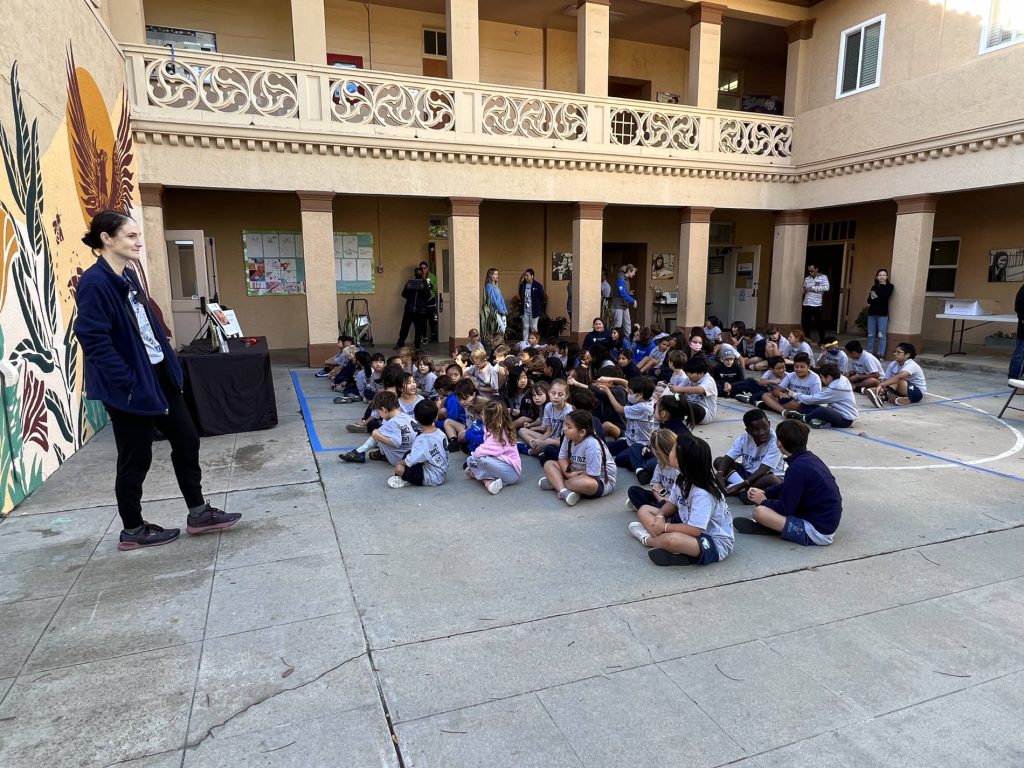VISTA — “This is the most challenging work we have done in our educational journey.”
That is how Elizabeth Joseph describes the work being done by the teachers at St. Francis of Assisi Catholic School in Vista, where she serves as principal.
San Diego County health authorities authorized the return to in-person classes for K-12th grades starting on Sept. 1 as long as they met a lengthy list of social distancing and hygiene requirements to prevent the spread of COVID-19.
Most of the diocese’s 37 elementary schools began to return immediately, with the two secondary schools following suit by the third week of the month. The students are expected to stay in school even if the governor moves the county into a more restrictive phase should cases surge.
All of the schools offer parents an option to send their children to school or keep them at home, where they can learn at a distance. The response has ranged from 6 percent staying home, as was the case at St. Mary School in Escondido, to 50 percent learning from home, as was the case at Good Shepherd School in Mira Mesa, with most schools falling in between.
Students found a dramatically different physical environment when they returned — and big changes in basic activities such as recess and lunchtime, with plenty of built-in hand-washing breaks in between.
At Our Lady of Grace School in El Cajon, for instance, individual grades had to be housed in two classrooms rather than in one to accommodate desks situated six feet apart. The teacher taught in one of the classrooms, and the students in the other room saw him or her on a big TV screen and were supported by a teacher’s aide.
Schools use other models, such as students being on campus on alternate days, to manage physical distancing.
During the shutdown last spring, teachers used the Zoom online platform to teach all students learning from home. Now, teachers needed to instruct students sitting in front of them and in their homes at the same time, presenting a tremendous challenge. And they needed to make this change just days after returning to class, when it became apparent that what had worked before the school year ended was not working as the new one began.
“The teacher had to reimagine his or her role in the classroom,” is how the associate director of the diocese’s schools, Dr. Julie Cantillon, describes it.
This meant that lessons needed to be developed quickly to be delivered online from the get-go, using videos and other digital tools to support them, rather than adapted to the Internet after the fact, which was the case last spring.
That kind of instruction is known as “high flex,” a hybrid of traditional instruction combined with online teaching that offers schools the flexibility to meet student needs, given available resources.
That flexibility comes into play if students show signs of a cold, such as sniffles or a cough, and have to automatically stay home for 10 days, or if they should come down with COVID-19.
Principals say they are impressed how students and their families have responded to these unprecedented stresses.
“I am extremely proud of the resilience of our students,” said Kelly Bonde, principal of St. Katharine Drexel Academy in central San Diego. “This school year has put them through a lot of different twists and turns already, and they have risen to every occasion.”
The director of the diocese’s schools, John Galvan, said they are succeeding “in this moment because we are Church.”
“That means that we are inherently connected, collaborative, and most importantly, we are driven by a shared mission to educate in the image of Christ for our Church and for our world.”









